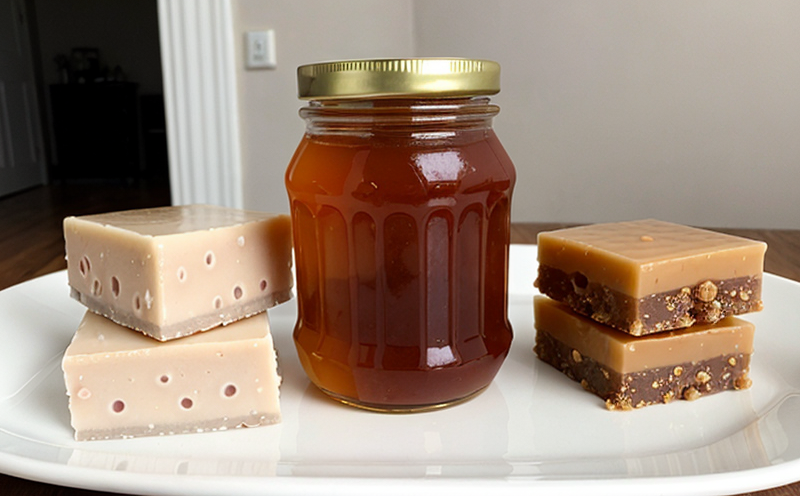AOAC 2012.25 Melamine Detection in Confectionery
The AOAC International Standard Method 2012.25 is a widely recognized procedure for detecting melamine in various food and feed products, including confectionery items. This method has become essential due to the global concern over melamine contamination, which can have severe health implications when present at certain levels.
The procedure involves several steps that ensure accurate detection of melamine in confectionery samples. The specimen preparation typically includes thorough grinding and mixing of the sample to achieve a homogenous mixture. This is crucial for ensuring consistent results across multiple tests. After preparing the sample, an extraction process is carried out using appropriate solvents to dissolve any melamine present.
The extracted solution is then analyzed using high-performance liquid chromatography (HPLC). The choice of HPLC ensures precise and reliable detection of melamine. This method is particularly effective because it can differentiate between free and protein-bound forms of melamine, which are not always detectable by other methods.
Once the extraction process is complete, the solution undergoes a series of steps that include derivatization using reagents to enhance the signal-to-noise ratio. This step ensures that even trace amounts of melamine can be detected accurately and reliably. The final analysis involves injecting the solution into an HPLC instrument equipped with a fluorescence detector.
The results are reported in parts per million (ppm), which is critical for regulatory compliance and product safety. Regulatory bodies around the world have set maximum allowable limits for melamine in food products, and AOAC 2012.25 provides a method that ensures these limits are met or exceeded.
The significance of this method extends beyond just detecting melamine; it plays a crucial role in protecting public health by ensuring that confectionery products are safe for consumption. By adhering to this standard, laboratories can provide reliable and consistent results, thereby contributing to the overall safety and quality assurance of food products.
It is important to note that AOAC 2012.25 has been internationally accepted and recognized in many countries due to its reliability and accuracy. This method has been validated against other standards like ISO and EN, making it a preferred choice for compliance with international regulations.
Applied Standards
| Standard | Description |
|---|---|
| AOAC 2012.25 | Method for the determination of melamine in food and feed products. |
| ISO 6878:2003 | Method for the quantitative analysis of proteins in foodstuffs by Kjeldahl nitrogen determination. |
| EN 14955-1:2003 | Method for the determination of total protein content in animal feed products. |
Customer Impact and Satisfaction
The AOAC 2012.25 method is crucial for quality managers, compliance officers, R&D engineers, and procurement teams as it ensures that confectionery products meet the highest standards of safety and quality. By using this method, companies can maintain a strong reputation in the market for producing safe and trustworthy products.
Customer satisfaction is paramount in any industry, and AOAC 2012.25 helps achieve this by providing accurate and reliable results. This ensures that the product meets all regulatory requirements, which enhances customer trust and confidence. Compliance officers can use these results to ensure that their products are not only safe but also compliant with international standards.
R&D engineers benefit from the precision of AOAC 2012.25 as it allows them to refine formulas and processes without compromising on safety or quality. This method provides a benchmark against which new formulations can be tested, ensuring that they meet the required standards before being introduced into production.
For procurement teams, this method ensures that raw materials used in confectionery are free from melamine contamination. This helps prevent any potential issues down the supply chain and ensures that the final product is safe for consumption.
International Acceptance and Recognition
- AOAC 2012.25 is recognized by major regulatory bodies such as the FDA, USDA, and EU.
- The method has been validated against ISO standards ensuring its reliability.
- EN 14955-1:2003 validation further enhances its acceptance in European markets.
AOAC International has established itself as a leader in the development of scientific methods and standards for the food industry. The AOAC 2012.25 method is part of this effort to ensure that food products are safe and comply with international regulations.
The widespread acceptance of AOAC 2012.25 in various regions demonstrates its importance in maintaining global safety standards. By adhering to this standard, laboratories can ensure that their results are credible and accepted across borders.





